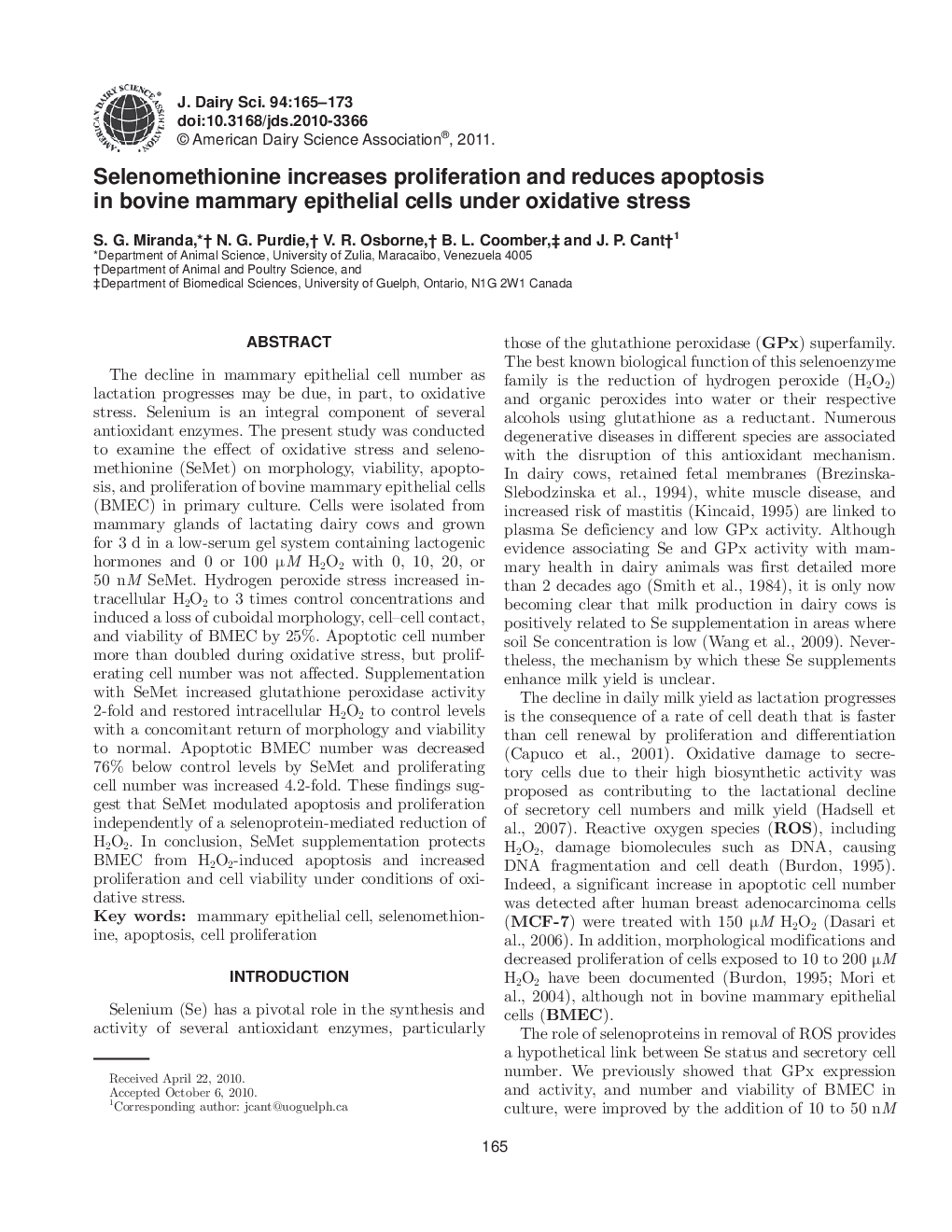| Article ID | Journal | Published Year | Pages | File Type |
|---|---|---|---|---|
| 10980692 | Journal of Dairy Science | 2011 | 9 Pages |
Abstract
The decline in mammary epithelial cell number as lactation progresses may be due, in part, to oxidative stress. Selenium is an integral component of several antioxidant enzymes. The present study was conducted to examine the effect of oxidative stress and selenomethionine (SeMet) on morphology, viability, apoptosis, and proliferation of bovine mammary epithelial cells (BMEC) in primary culture. Cells were isolated from mammary glands of lactating dairy cows and grown for 3 d in a low-serum gel system containing lactogenic hormones and 0 or 100 μM H2O2 with 0, 10, 20, or 50 nM SeMet. Hydrogen peroxide stress increased intracellular H2O2 to 3 times control concentrations and induced a loss of cuboidal morphology, cell-cell contact, and viability of BMEC by 25%. Apoptotic cell number more than doubled during oxidative stress, but proliferating cell number was not affected. Supplementation with SeMet increased glutathione peroxidase activity 2-fold and restored intracellular H2O2 to control levels with a concomitant return of morphology and viability to normal. Apoptotic BMEC number was decreased 76% below control levels by SeMet and proliferating cell number was increased 4.2-fold. These findings suggest that SeMet modulated apoptosis and proliferation independently of a selenoprotein-mediated reduction of H2O2. In conclusion, SeMet supplementation protects BMEC from H2O2-induced apoptosis and increased proliferation and cell viability under conditions of oxidative stress.
Related Topics
Life Sciences
Agricultural and Biological Sciences
Animal Science and Zoology
Authors
S.G. Miranda, N.G. Purdie, V.R. Osborne, B.L. Coomber, J.P. Cant,
